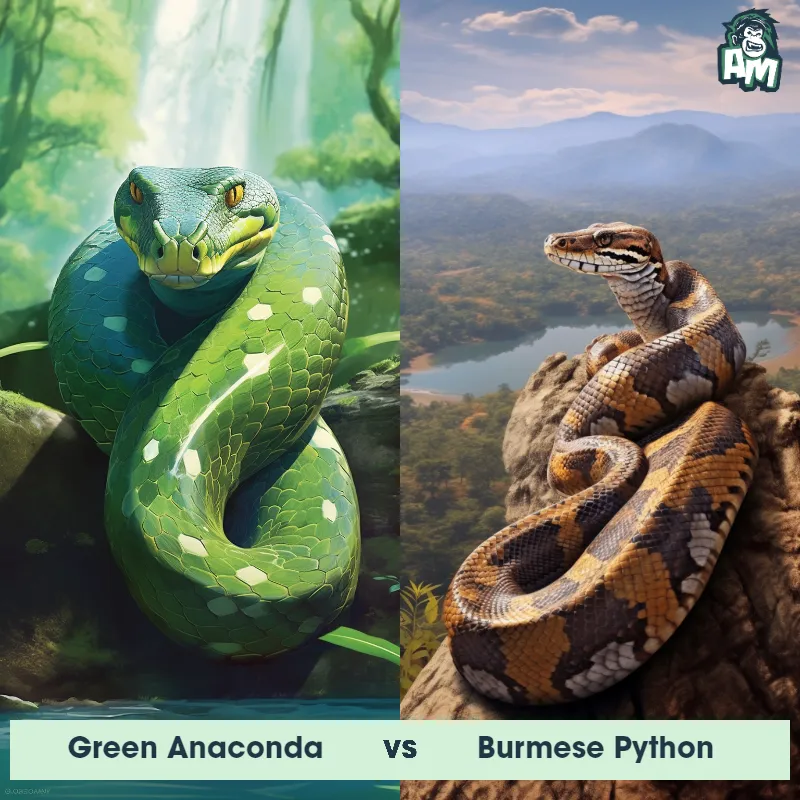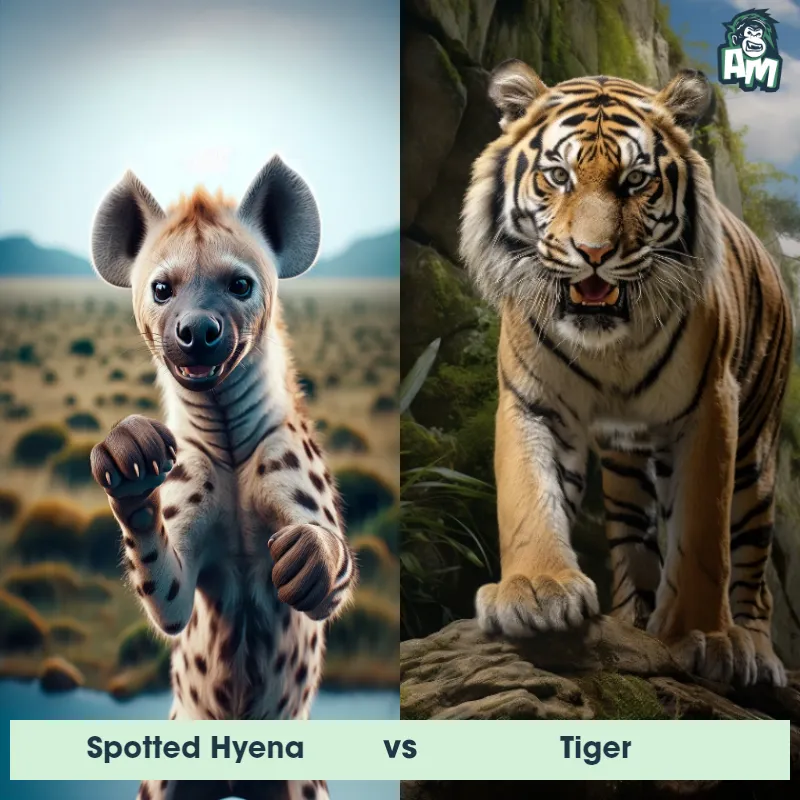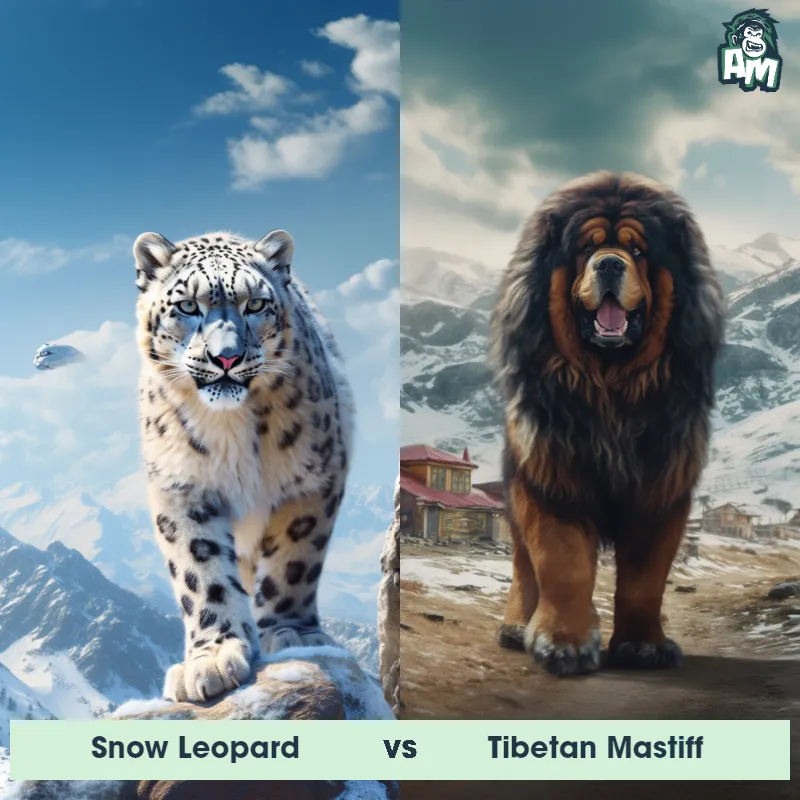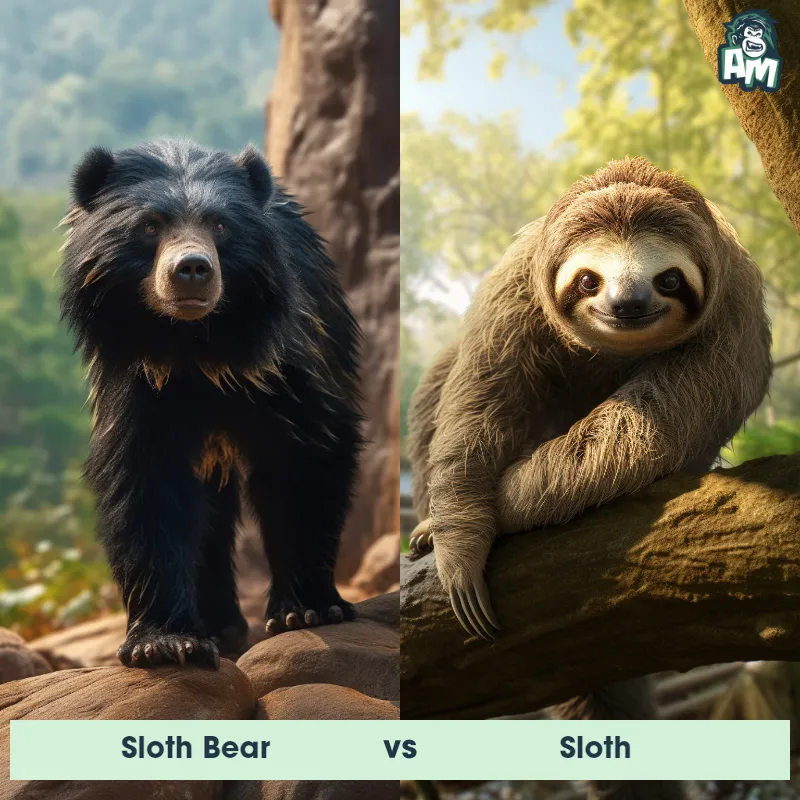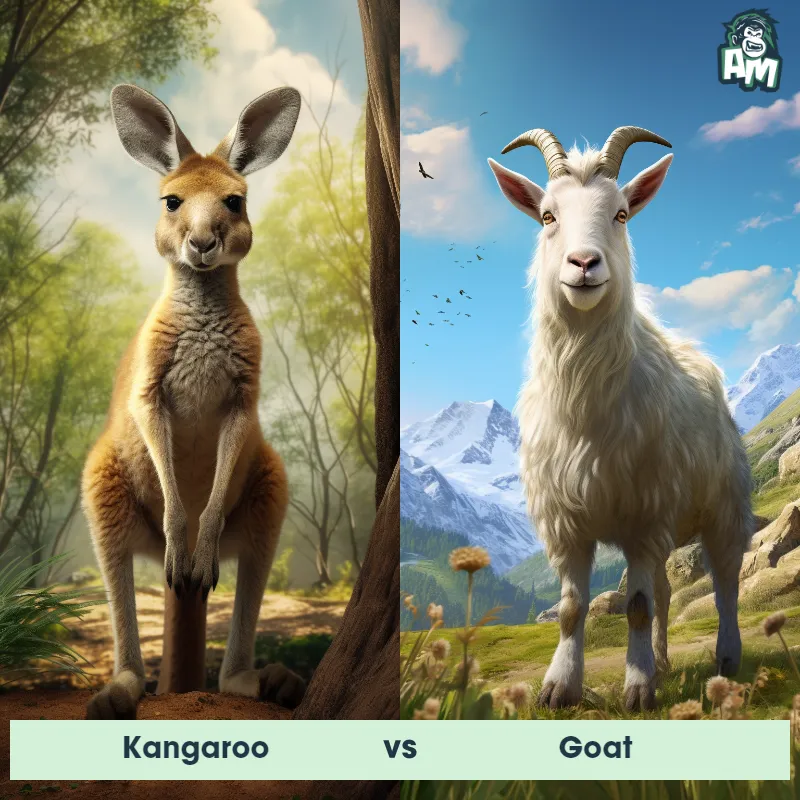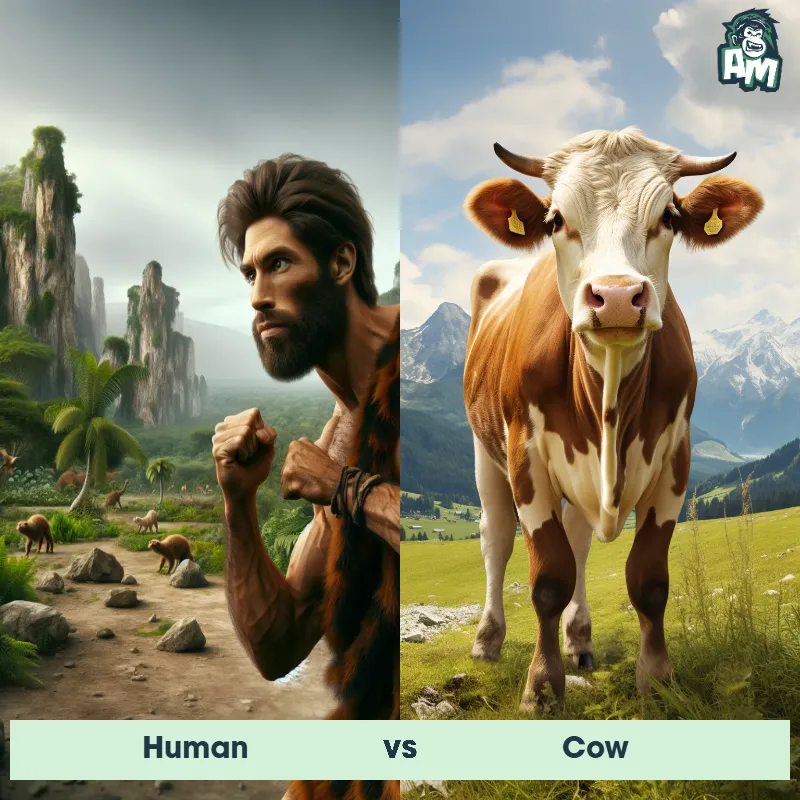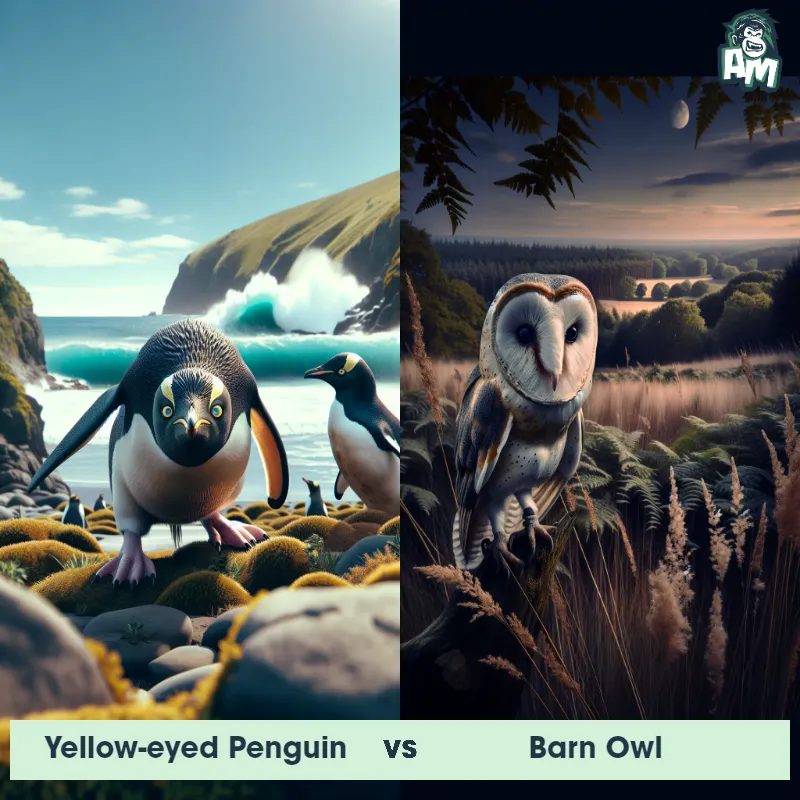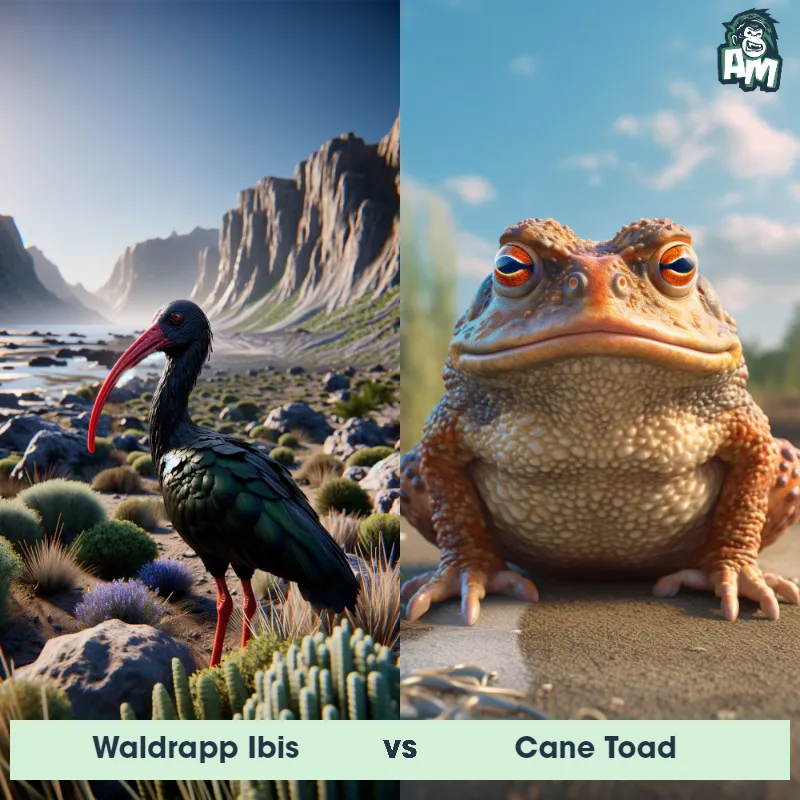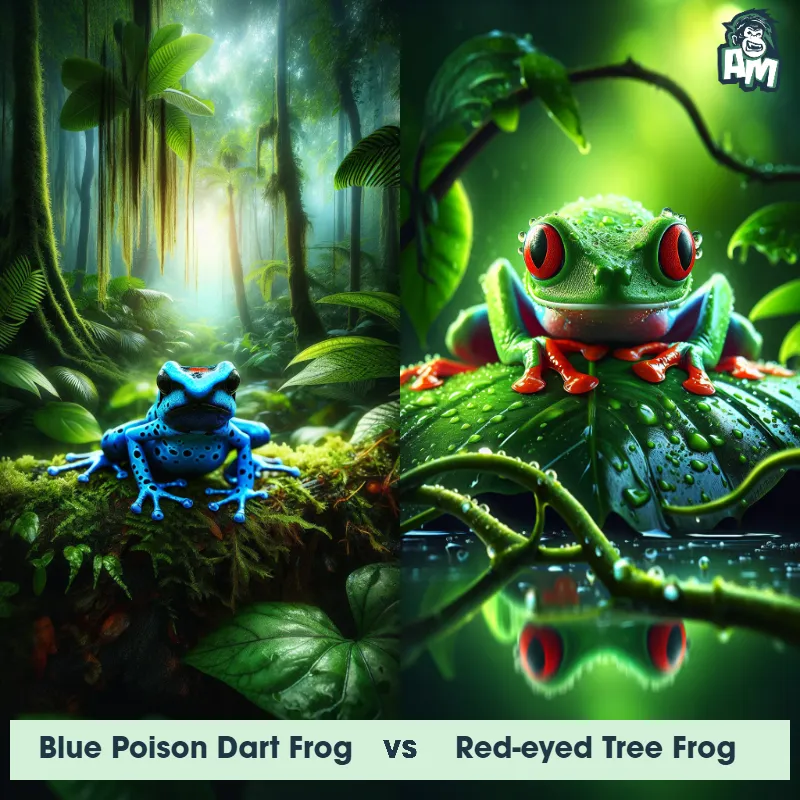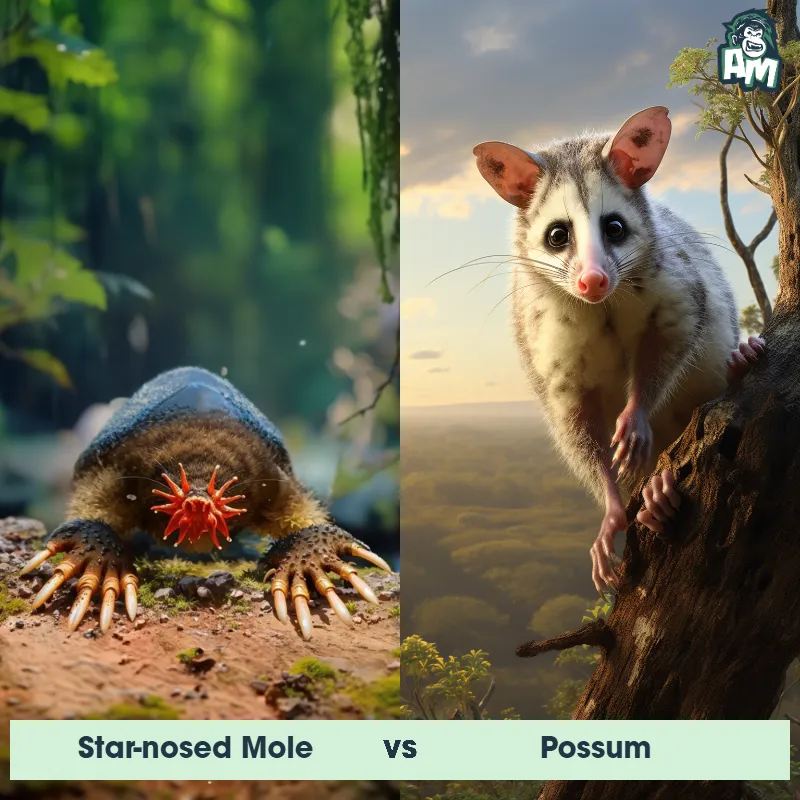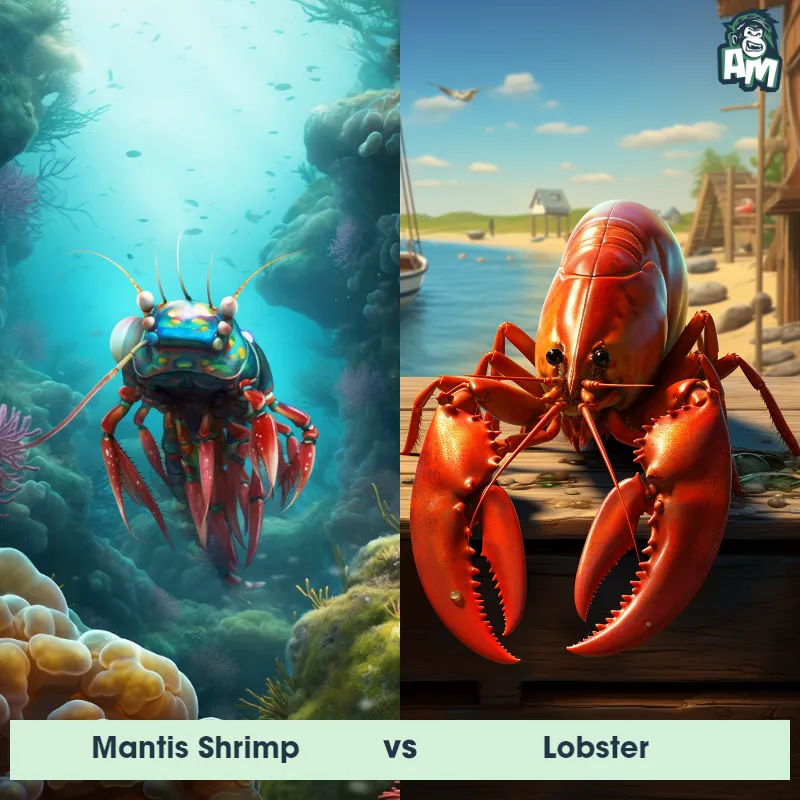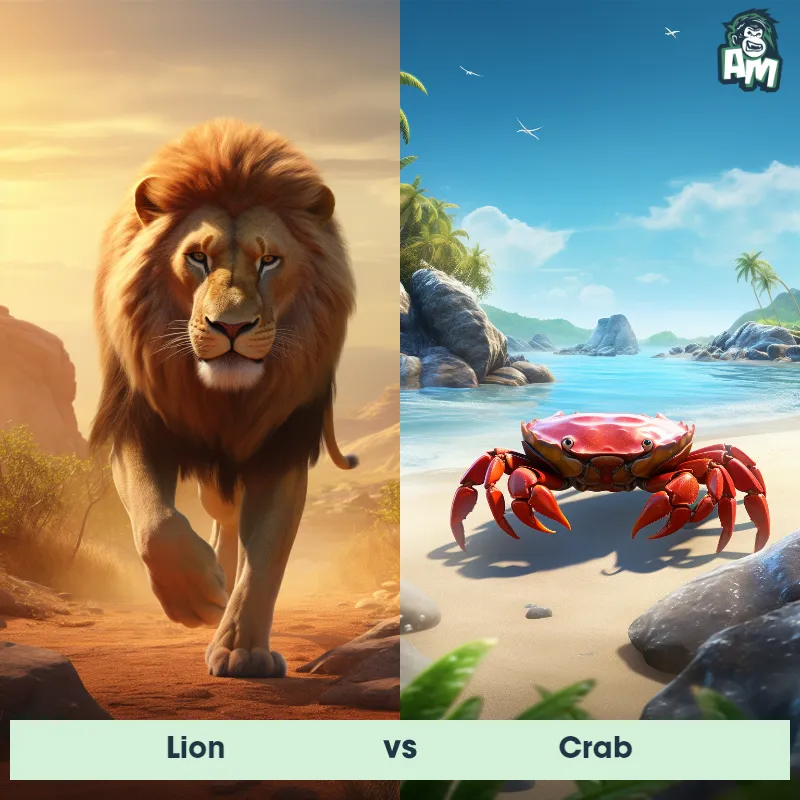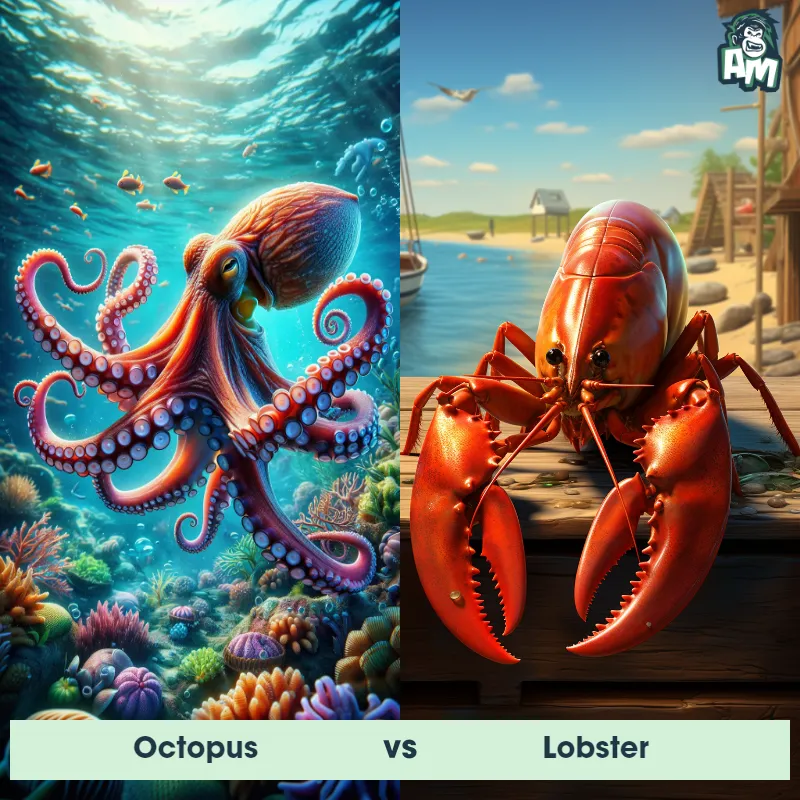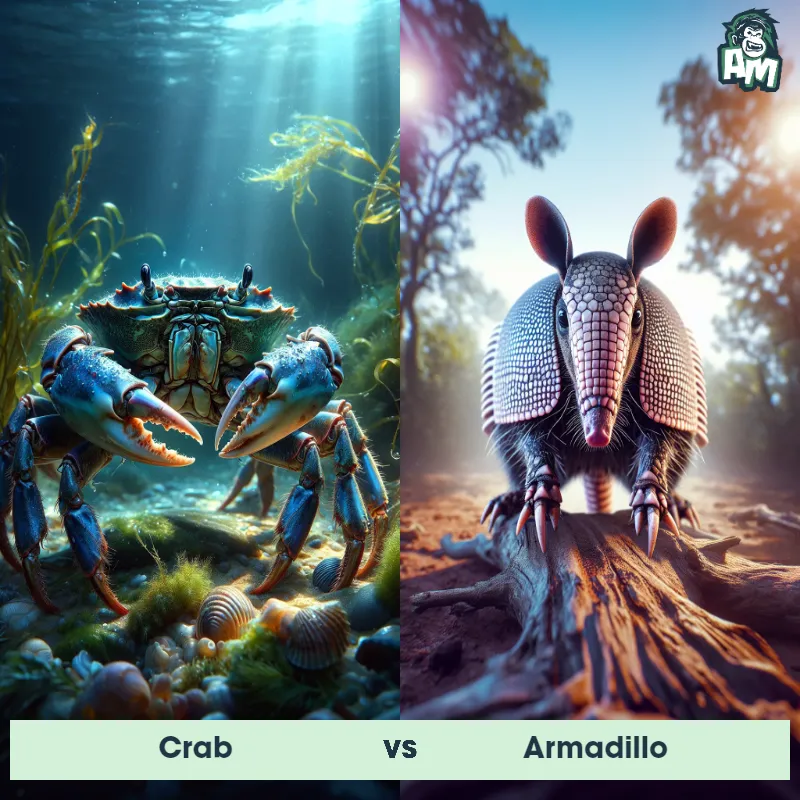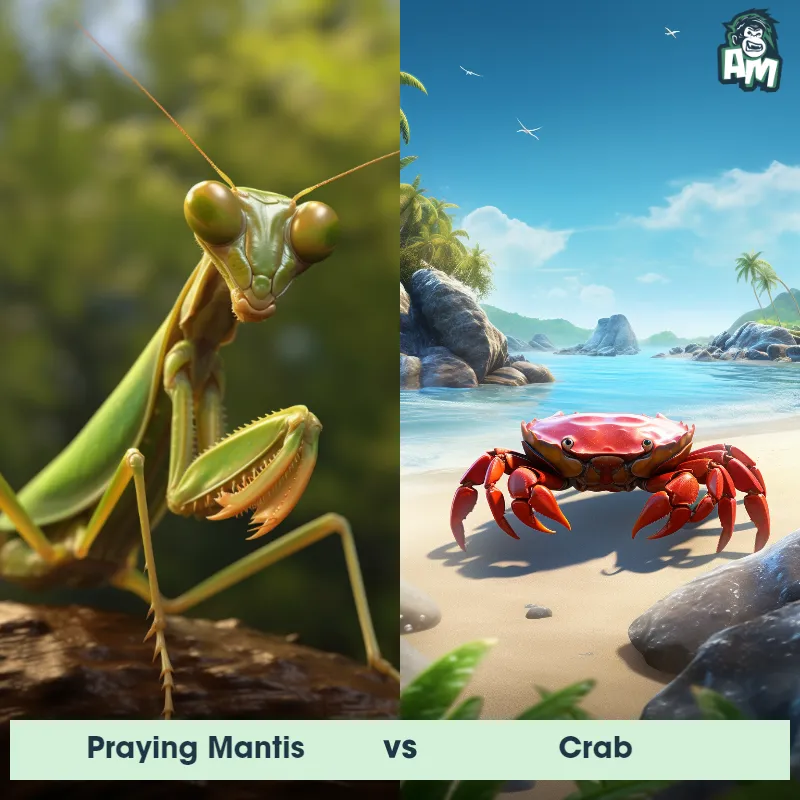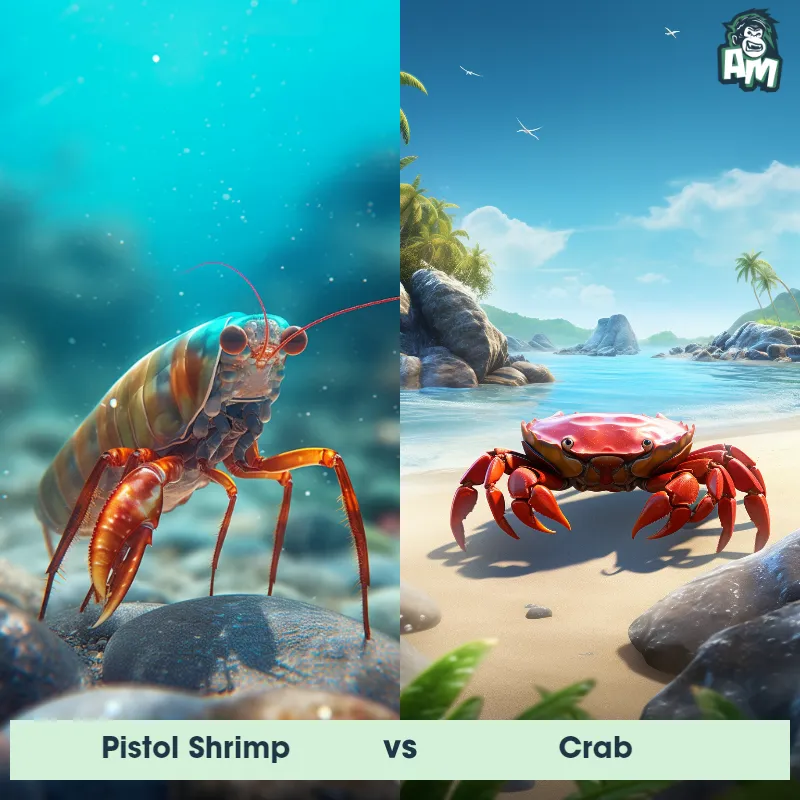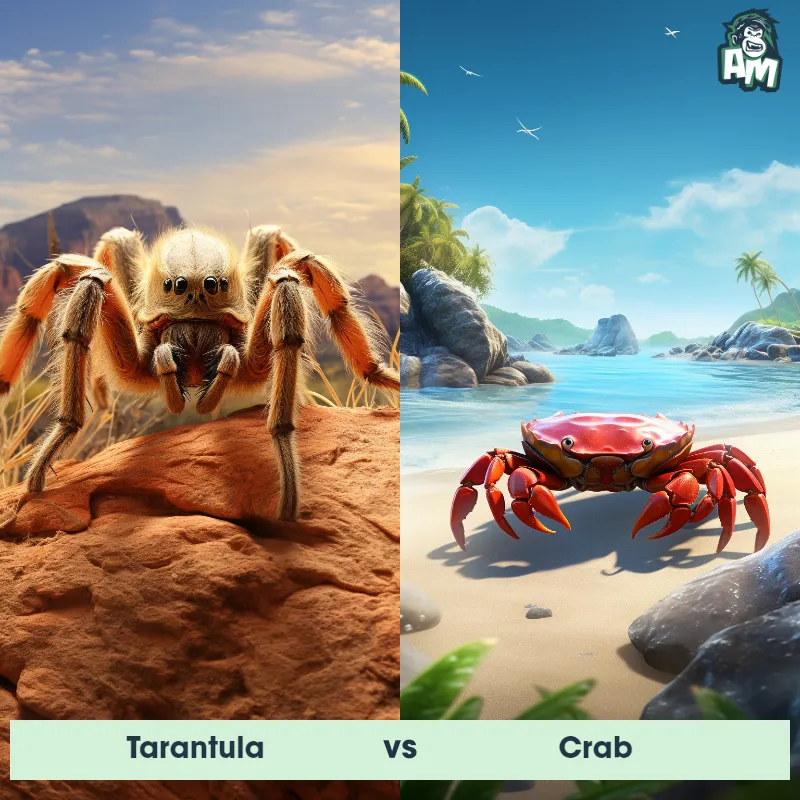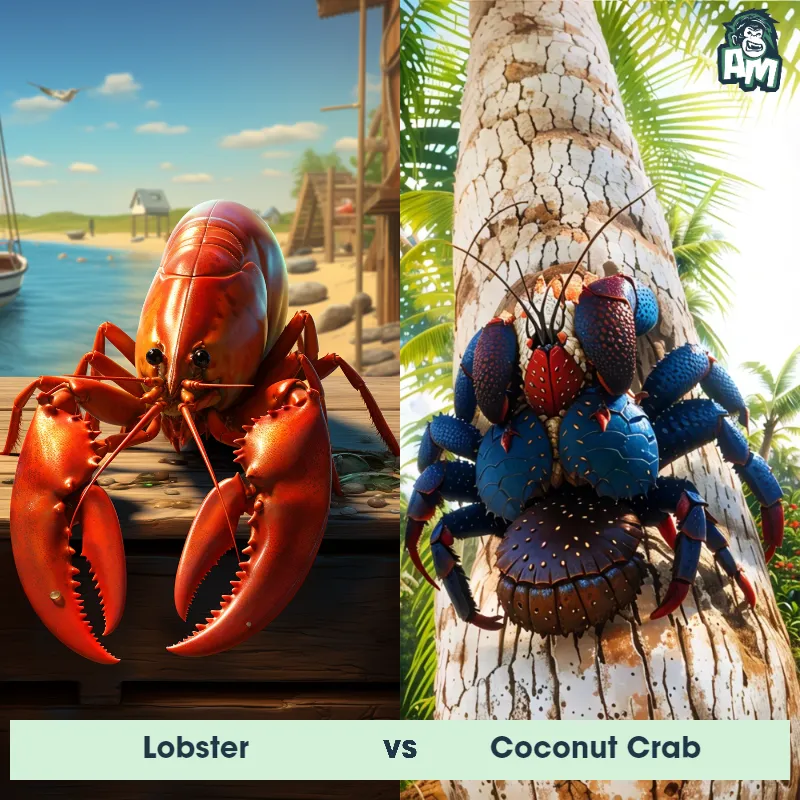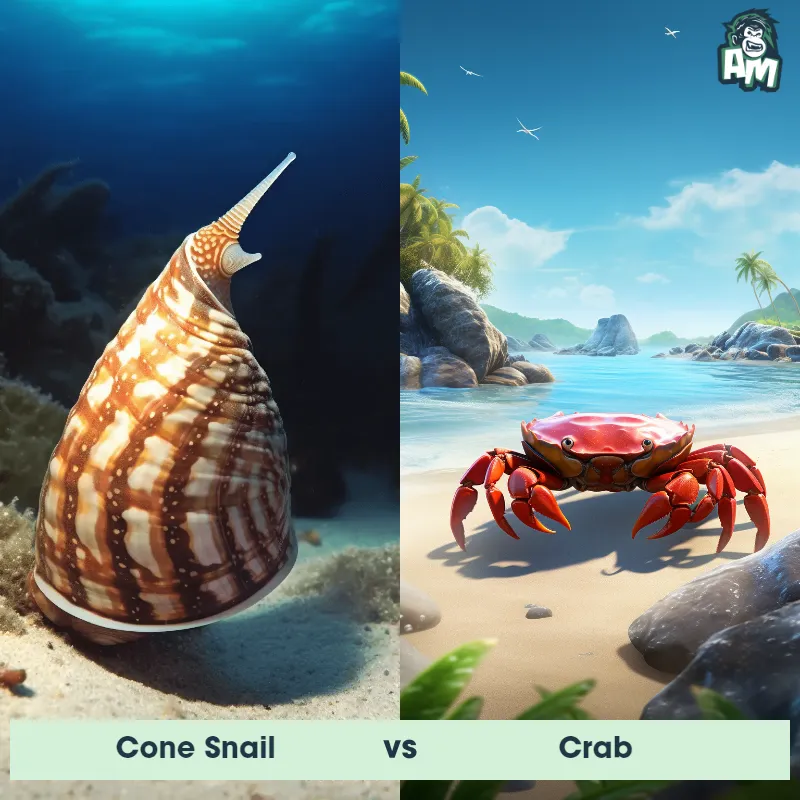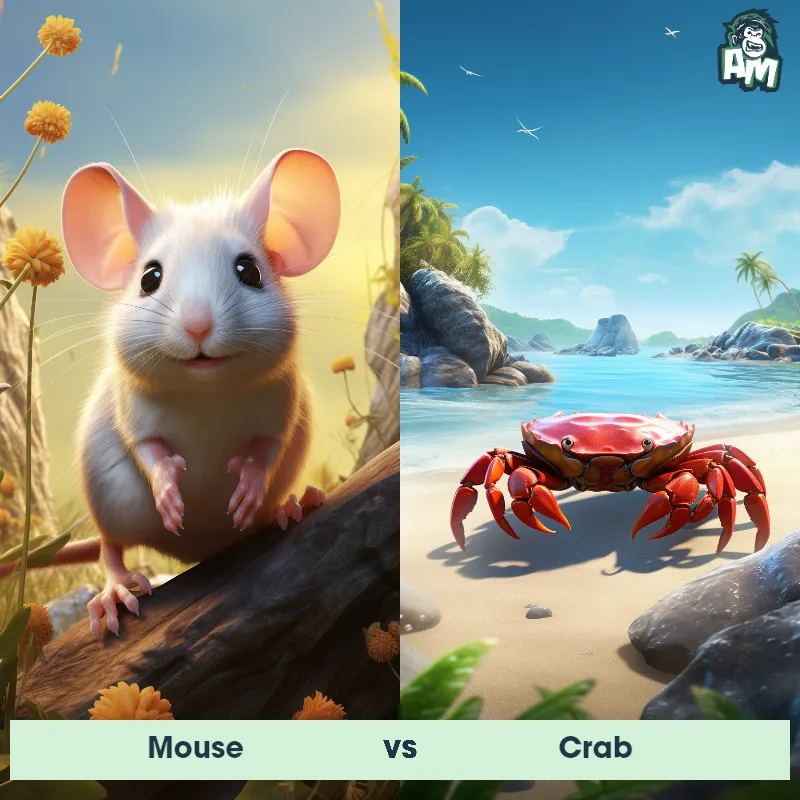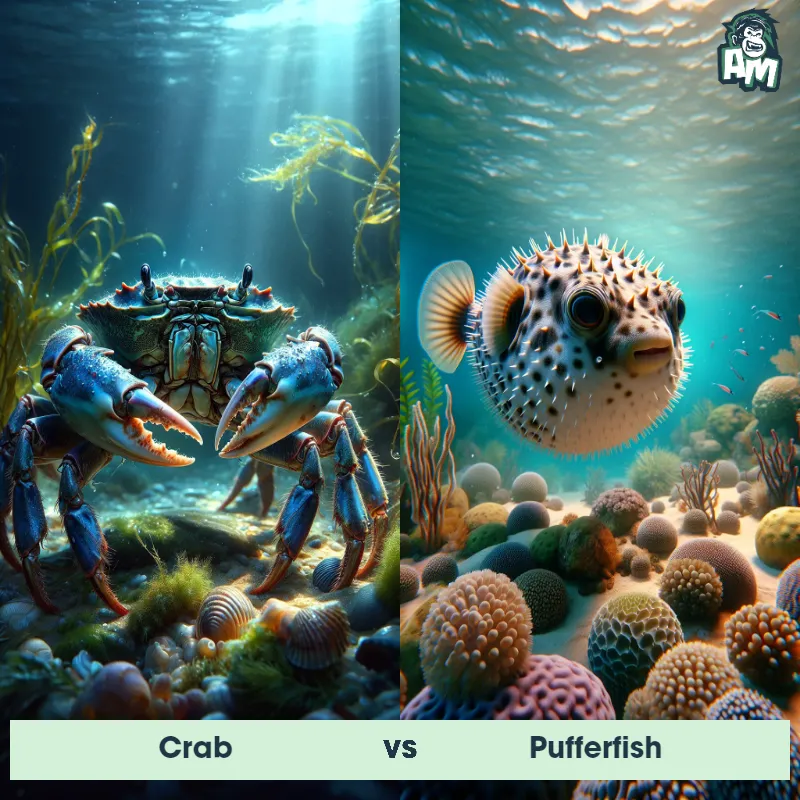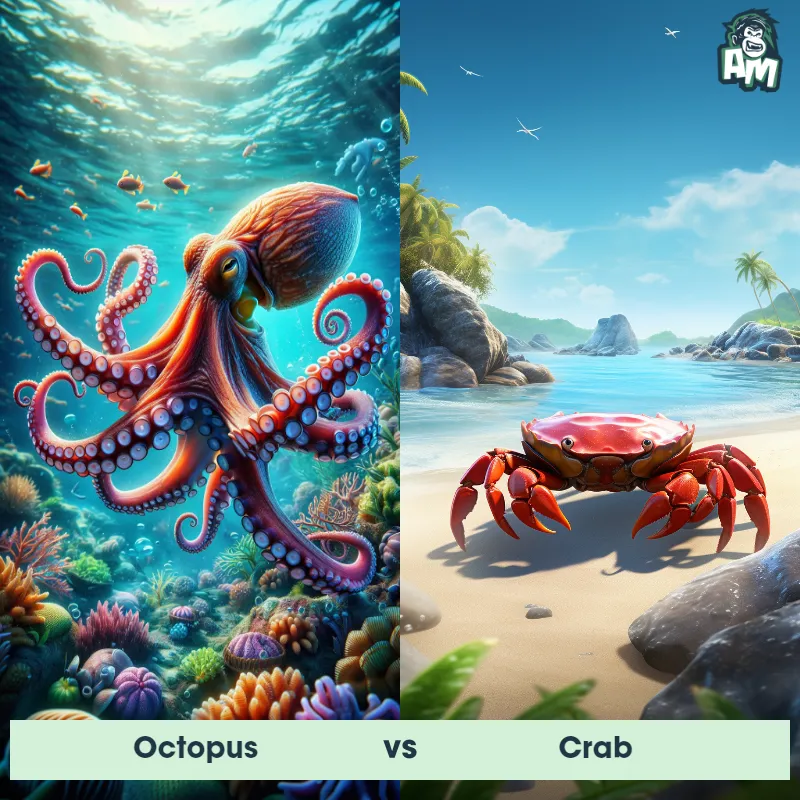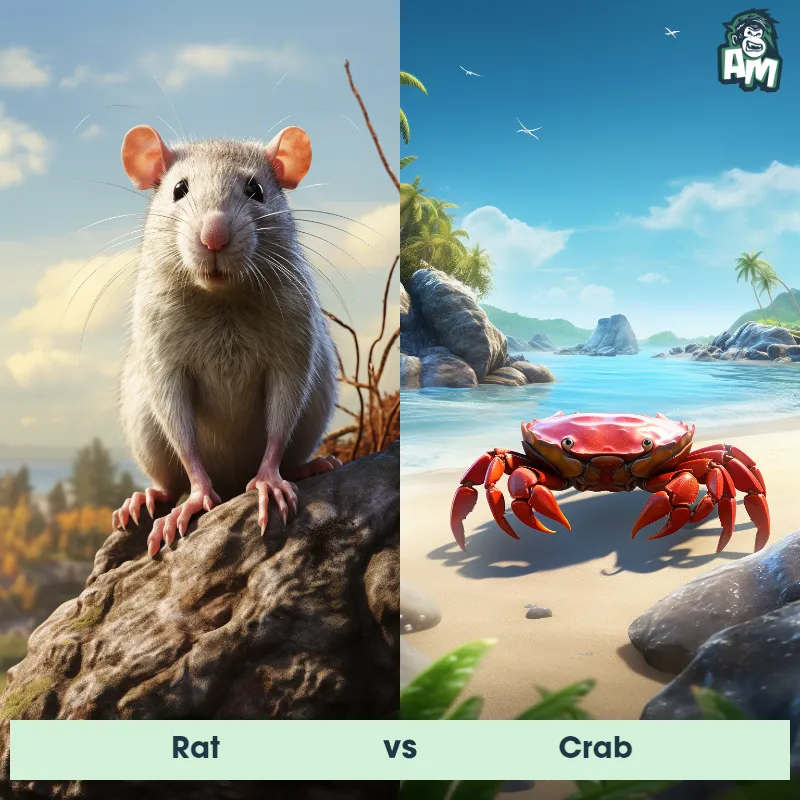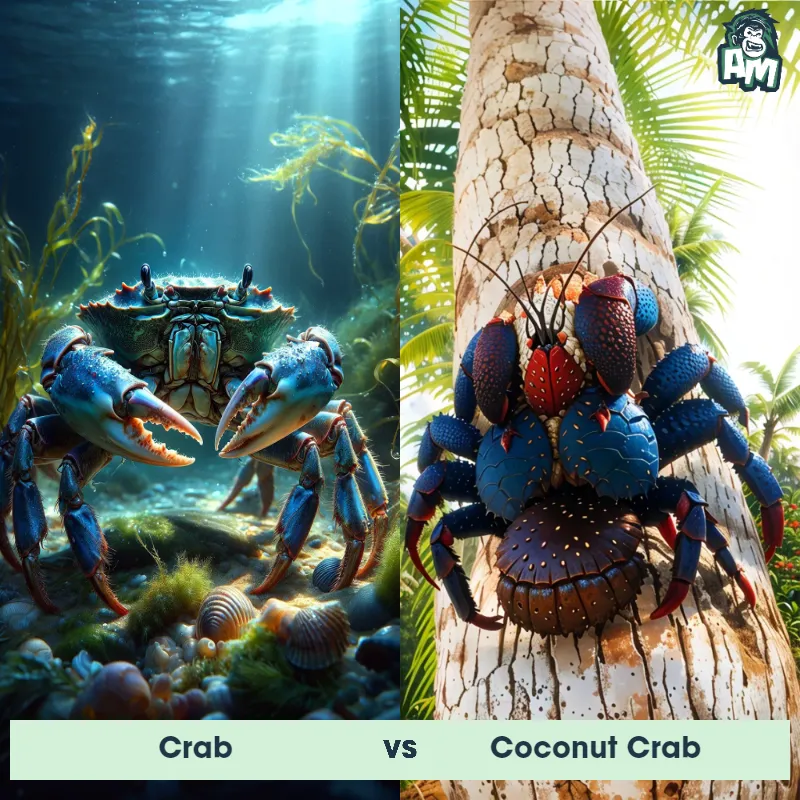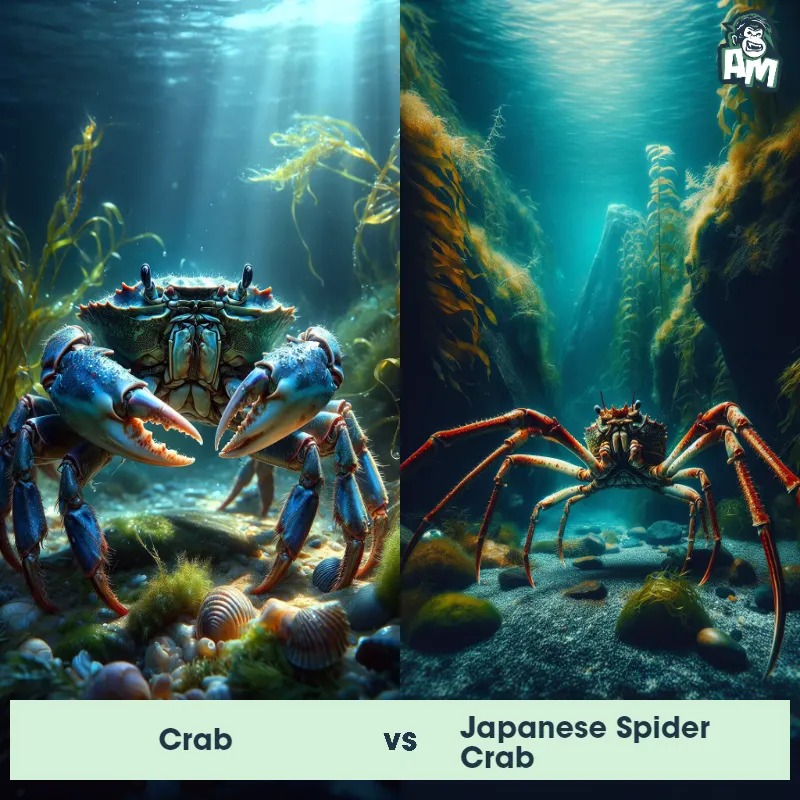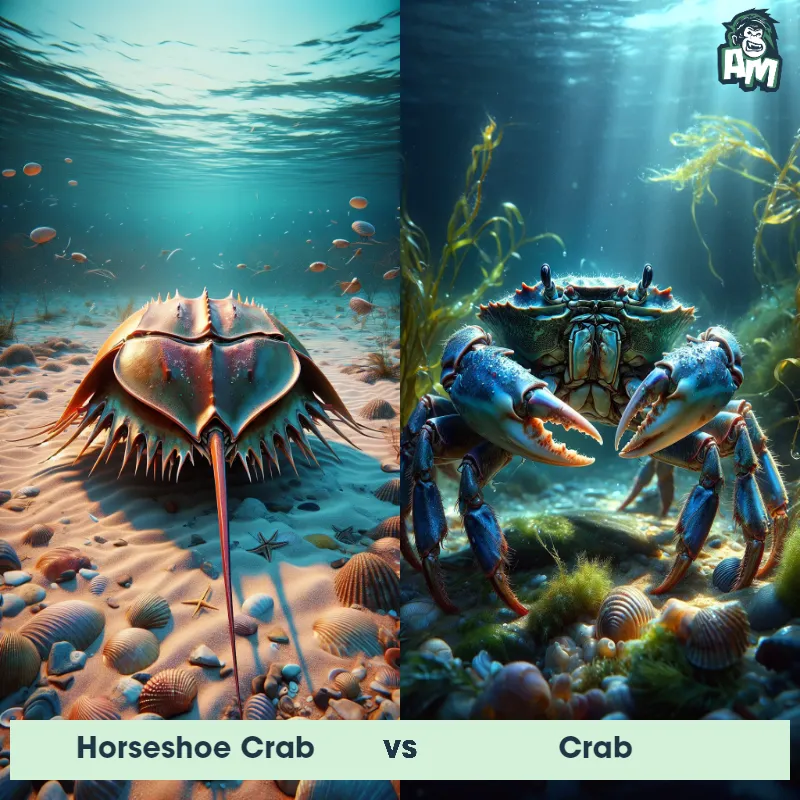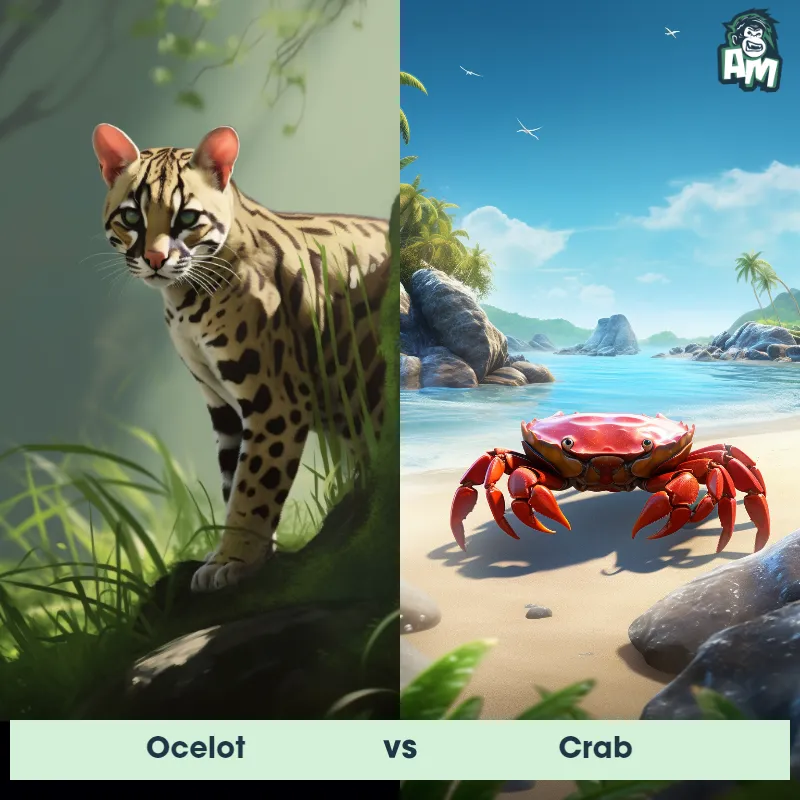Lobster vs CrabSee Who Wins
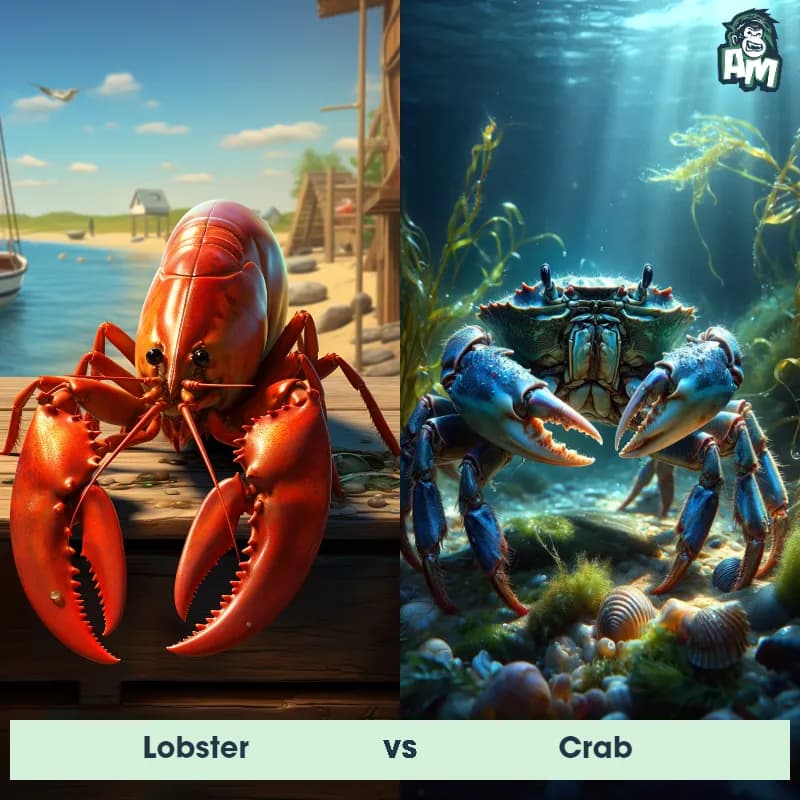
Ladies and gentlemen, we have an extraordinary encounter for you today under the ocean surface. In one corner, weighing in with formidable claws and a considerable heft, we've got the one of the true heavy hitters of the marine landscape, the Lobster. And in the other corner, backed by a broad carapace and skilled in strategic retreats, comes the master of evasion, the Crab. Two sea beasts known for their tenacity, now face to face in an epic battle.
Contender 1: Lobster
The Lobster is a type of marine crustacean known for its strong, segmented body, large claws, and antennae. They have a hard protective exoskeleton and can range in color from blue and green to a reddish-brown, turning bright red when cooked. Lobsters have ten legs, with the front two often being much larger and serving as the primary claws for hunting and defense. They can grow quite large, with some species reaching lengths of over 3 feet and weights of up to 40 pounds.
Fun Fact: Contrary to common belief, lobsters are not immortal, but they do have an impressive lifespan, with some living to be over 100 years old.
Contender 2: Crab
Crabs are decapod crustaceans known for their characteristic thick exoskeleton and a pair of robust claws. They vary in size from the tiny pea crab, a few millimeters wide, to the giant Japanese spider crab, with a leg span of up to 4 meters. Crabs are typically found in the ocean, but some species are also found in freshwater or on land. Notably, crabs are known for their sideways walking, a motion that distinguishes them from other crustaceans.
Fun Fact: Crabs communicate with each other by drumming or waving their pincers, which is not just a sign of aggression, but can also be a part of their mating rituals.
Matchup Stats
| Lobster | Crab | |
|---|---|---|
| Size | Up to 3.25 feet (1 meter) | Varies from a few millimeters to 13 feet (4 meters) leg span |
| Weight | Up to 44 pounds (20 kilograms) | Varies greatly, up to 44 lbs (20 kg) for the largest species |
| Speed | 11mph (18km/h) | 11 mph (18 km/h) |
| Key Strength | Strong, large claws for hunting and defense | Robust claws |
| Biggest Weakness | Vulnerable soft body during molting period | Vulnerable when molting |
Current Votes
Lobster vs Crab
See Who Wins
Matchup Videos
All of our videos contain verified footage of natural encounters between the Lobster and the Crab. These are true sightings and observations filmed by tourists, scientists, and wildlife documentarians.View More Matches
Looking For More?
Similar Matches
Scientific Stats
| Lobster | Crab | |
|---|---|---|
| Scientific Name | Homarus americanus | Brachyura |
| Family | Nephropidae | Decapoda |
| Habitat | Ocean floors, rocky, sandy, or muddy areas | Ocean, Freshwater, Land |
| Geography | Atlantic Ocean, particularly North America's east coast | Worldwide |
| Diet | Fish, mollusks, other crustaceans, worms, and some plant life | Omnivores, eat algae, mollusks, bacteria, fungi, and small fish |
| Lifespan | 50 years - 100 years | 1 year - 100 years |
Key Differences between Lobster and Crab
- Tail structure: Lobsters have a long, muscular tail that is often curled under their body, while crabs have a broad, flattened tail that is folded against their body, providing them with a paddle-like structure for swimming.
- Antennae: Lobsters possess long, slender antennae, which are used for sensory purposes, while crabs have shorter, thicker antennae, often equipped with sensory hairs.
- Body shape: Lobsters have elongated bodies with a long abdomen and a broad, flattened carapace (shell), whereas crabs have a more compact body with a wide, flattened carapace.
- Size: Lobsters generally grow larger than crabs, with some species reaching lengths of up to 3 feet, while crabs tend to be smaller and rarely exceed a foot in length.
- Claws: Lobsters have two large, asymmetrical claws, with one being larger and used for crushing prey, while crabs have two symmetrical claws of similar size, often specialized for different functions such as cutting or grabbing.
- Leg structure: Lobsters have long, muscular legs, with the first pair often modified into large claws, while crabs have shorter, jointed legs, with the last pair often modified for walking or swimming.



